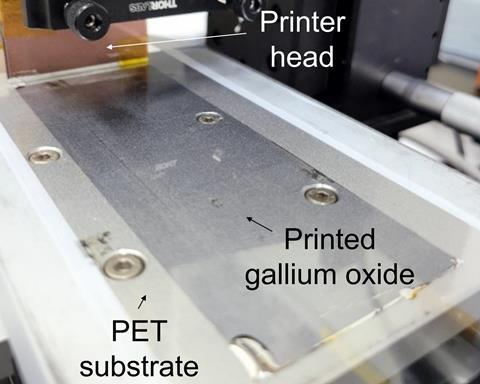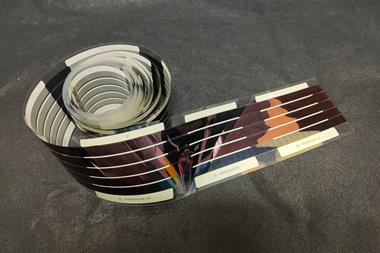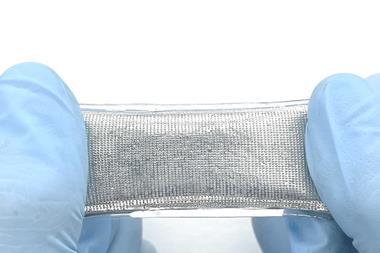A new method prints metal oxide inks at ambient temperatures. The method simplifies the production of ultrathin metal oxide films – a class of semiconducting materials found in gas sensors and most electronic devices.
‘They used this technique to … fabricate something that has not been realised before and is really highly sought after, which is wearable, transparent, flexible. It is groundbreaking in the field … with a major fundamental advantage,’ comments Ali Zavabeti, an expert on liquid metal alloys at the University of Melbourne, Australia , who wasn’t involved in the research.
Traditional methods to produce metal oxides require very large, specialised equipment. ‘These machines are expensive to run and they need maintenance and they require high vacuum or high temperature and generally consume energy,’ adds Zavabeti.
However, there also is the potential to make use of naturally occurring metal oxides films. Metal oxides form everywhere from the lids of fizzy-drink cans to the surface of stainless-steel pots. But these are difficult to separate from the metal. Current technologies require brute force and produce films with defects. Now, a group of researchers from South Korea, Canada and the US have developed a technique that allows metal oxides to be continuously formed and deposited as thin films.
Defect free and easy to make
‘One of the really nice advantages of this approach is that it’s gentle and you don’t have to do any post processing to get a nice film,’ says Micheal Dickey, a materials scientist from North Carolina State University, US, who led the project.
The researchers filled glass slides with different liquid metals, including gallium, producing a meniscus where the metal naturally oxides. The material can be continuously printed from the meniscus onto a range of different substrates from which the final films can be easily removed.

The team produced flexible and transparent films, just 4nm thick, that initially display electrical conductivity due to a metallic layer encased between two outer layers of metal oxide. As the material continues to oxidise, the metallic behaviour decreases over time.
The initial formation of a metallic layer enabled the team to deposit gold – a material that doesn’t usually interact with metal oxides – across the film. This preserved the films’ conductivity and made them scratch-resistant, making them potentially useful for applications like mobile phone touchscreens.
‘The films that we can paint on the surface – not only do they conduct electricity, which shows they have metallic properties, but they also interact with the gold, which is again really surprising and unexpected,’ says Dickey.
The team now plan to further investigate the origins of the films’ unusual properties and explore what other metal oxides can be produced with the printing technique.
References
M Kong et al, Science, 2024, DOI: 10.1126/science.adp3299

















No comments yet